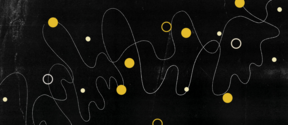20 Minute Dance
Connect with your body and listen to the present moment.

In order for something new to emerge and become alive, it is necessary to first create beneficial conditions for it.
Transformative practices often start with stillness. Stillness offers an opportunity to stop and to reconnect the mind and body, and to become aware of our presence and the way we perceive things. This can open up a space for other ways of knowing.
The body offers different kinds of knowing and sensing — intuitive, embodied information. Something that thinking and rational mind alone cannot provide. Knowledge accumulates in our bodies too, and it does not always instantly connect with our minds.
“Many times we think creativity might have to do with thoughts, ideas, opinions, and we often associate thinking with our minds. However, creativity, for us, also has to do with doing (hands), and feeling (heart). Creativity results from an integration and balance of body and mind. Or thinking, feeling, doing. Integration is an important word here. Body-mind integration is key to creativity in our work.” – Ricardo Dutra
Radical creativity often involves a dialogue between movement — experimenting, and stillness —reflection and learning from experiments.
Practices of stillness guide us to the state of being and listening to our senses and to the experiences that emerge from our shared curiosity and courage. Reaching this state helps us to re-connect our minds and bodies in a new way as we listen to our multifaceted intelligence and follow what our body-minds wants to do.
SPT is based on alternating between stillness and movement. We are invited to hold the stillness long enough to ensure that our behaviour is not a habitual response.
Combined with other exercises, such as guided journaling, stillness practices can also help to discover and refine the intention of the experiments and explore their broader connections to ongoing global and societal transformations.
Concepts of stillness, non-doing and being grounded adapted from Arawana Hayashi's work.
“It was very interesting to notice how much this can help, how your body is open, how it helps the mind to be open.” – Participant in the CBCR pilot
20 Minute Dance is one good option to explore stillness, non-doing and being grounded.
Below you can also find two videos: the story of the 20 Minute Dance and the instructions for it.

Connect with your body and listen to the present moment.

A deeper connection to ourselves, others and the world.

Trust other kinds of knowing to sense underlying potentials.

Empty space makes room for something new.

Process of internalising new habits can increase resilience.